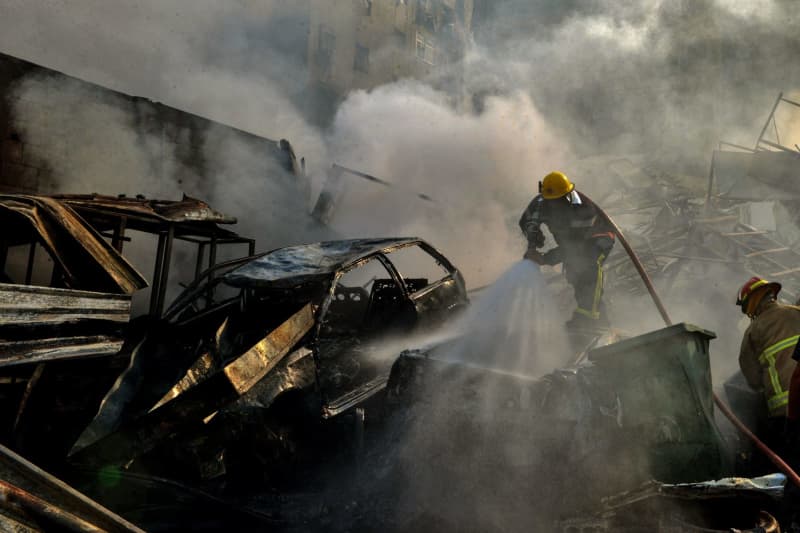Recent clashes between Israel and the Hezbollah militia in Lebanon have tragically escalated, resulting in a reported 71 additional fatalities on Friday alone, with overall casualties nearing the 3,000 mark since the conflict reignited over a year ago. According to the Lebanese Health Ministry, Friday’s attacks also left 169 individuals injured, highlighting the dire humanitarian toll of the ongoing violence. Notably, the northeastern region of Lebanon bore the brunt of the latest onslaught, accounting for at least 52 of the new deaths, signaling the persistent intensity of hostilities in the area. It is important to note that the Health Ministry typically releases detailed victim counts only by the evening of the following day, suggesting a continuous and urgent assessment of the situation on the ground.
As of the latest reports, the cumulative death toll has reached 2,968, which tragically includes 183 minors. The ongoing conflict, which has been exacerbated since the violent events of October 7, has also left approximately 13,319 individuals injured. This staggering figure underscores the widespread impact of the conflict on civilians and communities throughout Lebanon. While the Health Ministry’s data serves as a critical source of information, it does not delineate between civilian casualties and Hezbollah fighters, complicating efforts to fully understand the human cost of the violence and its ramifications for Lebanese society.
The conflict has its roots in a complex web of political, sectarian, and international dynamics, compounded by the long-standing tensions between Israel and Hezbollah, an Iran-backed militant group that has been a significant player in regional conflicts. The violence that erupted more than a year ago has drawn international attention, with calls for both de-escalation and a reconsideration of military strategies by involved parties. However, the incessant bombardment and retaliatory strikes have perpetuated a cycle of violence that places innocent lives at risk and exacerbates an already dire humanitarian situation in Lebanon.
Reports indicate that Israeli airstrikes have targeted various areas, including southern Lebanese towns such as Khiam, where heavy smoke billowed from the aftermath of the assaults. These strikes not only aim at Hezbollah targets but inadvertently affect civilian infrastructure and homes, leading to palpable fear and instability within communities already grappling with the consequences of prolonged conflict. The damage inflicted upon civilian areas raises critical questions about the proportionality of military responses and the responsibilities of both state and non-state actors during wartime.
As the situation continues to evolve, humanitarian organizations and local authorities face challenges in providing necessary aid and support to those affected by the conflict. The struggle to access medical care, food, and safe shelter is increasingly urgent, as thousands of families find themselves displaced and in need of assistance. International bodies have called for a concerted humanitarian response to address the escalating crises borne out of the conflict, emphasizing the need for both immediate aid and long-term solutions to ensure the safety and well-being of the Lebanese populace.
Despite the significant toll the ongoing fighting has taken on the Lebanese people, the conflict’s resolution seems distant, with entrenched narratives and historical grievances complicating efforts towards peace. The combination of military engagement and humanitarian need highlights the urgent necessity for diplomatic dialogue and reconciliation to create a pathway toward stability in the region. Without concerted efforts to address the root causes of the conflict and to protect civilian lives, the situation is likely to deteriorate further, causing irreversible harm to the affected communities and reinforcing the cycle of violence that defines this protracted struggle.

